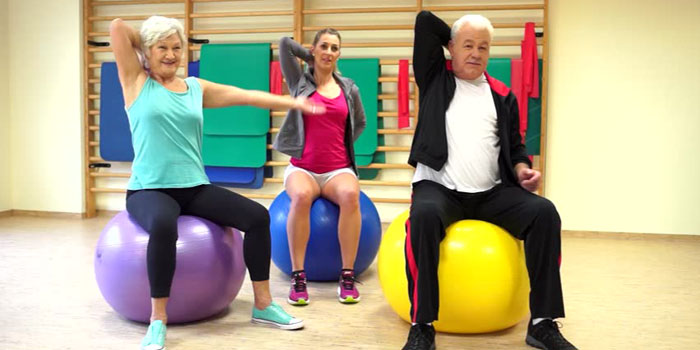
Balance is “essential for all human movement and movement is necessary for all activities of daily living,” according to the American Council on Exercise (ACE).
A combination of flexibility, strength, endurance, and balance are required for supporting even light physical activity in seniors. Unfortunately, due to many aging factors, seniors decreased balance skills leaves them highly vulnerable to fall-related injuries.
“Every 19 minutes in the U.S., an older adult dies from a fall, according to statistics from the U.S. Centers for Disease Control and Prevention (CDC).”
While most of us take balance for granted, for millions of seniors, poor balance is too often a lethal problem. Many of our elderly struggle with dizziness or imbalance, while others are injured in balance-related falls.
Most studies now conclude that exercise can not only reduce the odds of falling but also increase the likelihood of surviving fall-related injuries.
French researchers analyzed the results of 17 trials that tested the effect of fall-prevention exercises on seniors’ risk of falls and fall-related injuries. Overall, exercise programs reduced falls that caused injuries by 37%, falls leading to serious injuries by 43%, and broken bones by 61%. As reported online in the BMJ.
How Balance Training Exercises Improve Overall Health
While the primary goal is to improve or maintain balance and coordination as we age, there are many ancillary benefits to committing to a light “balance training regimen”. Even light exercise performed regularly can improve circulation, endurance, coordination, flexibility, increase bone and muscle density, improve mental acuity, reduce BP and HR. Beyond better balance, the other benefits of multi-component exercise programs are numerous.
According to a recent article in Age and Ageing Review, at least 1 in 3 seniors age 60 and up suffer from severe muscle loss or Sarcopenia. Sarcopenia (severe muscle loss) affects some of the larger muscles of the legs, hips, low back and abdominal core, all of which are critical for maintaining mobility and balance. Since the muscles act as a shock absorber or protection for the bones, any fall for someone with reduced muscle mass, will most likely result with broken bones and increase the severity of the injury.
In addition to improving balance and coordination, here is a bullet point list of benefits from a Balance Exercise Routine:
- Faster Reflexes and reduced reaction time.
- Increased Muscle density: Stronger, larger muscles reduce the impact of falls and improve your overall quality of life.
- Improved brain circulation: Regular exercise improves brain activity as we age.
- Stronger Bones: Resistance exercises increase bone density, and stronger bones are more resistant to injuries and fractures.
- Better coordination: This helps prevent falls from occurring in the first place
Best Exercise Routines to Prevent Falls in Seniors
The good news is you are never “too old” to exercise. If you can walk or stand, (even if you need a walker), then exercise may still be an option for you.
Nowadays, in most areas, there are a great variety of classes focused on improving balance. You can find them at Senior Centers, Jewish Community Centers, Health Clubs, Yoga and Pilates Studios. Also, there are many routines you can do at home, guided by virtual online classes through your cable or internet on-demand provider.
It would not be responsible to try to educate someone how to exercise without also providing personal guidance on how to properly execute Balance Exercises or Routines in this post. So much depends on an individuals state of health, strength, age, level of comprehension, athleticism, etc.
I highly recommend that anyone, regardless of age, beginning any new exercise regimen, start with a professionally supervised program until they are confident and competent in their ability to properly execute the exercises on their own, safely and with proper form. To that end, there are also many great online/on-demand programs available now, with very sophisticated means of monitoring and correcting your posture during exercises, even in the privacy of your own home.
More on How to get started with your Balance Training in our next blog.




No comment yet, add your voice below!